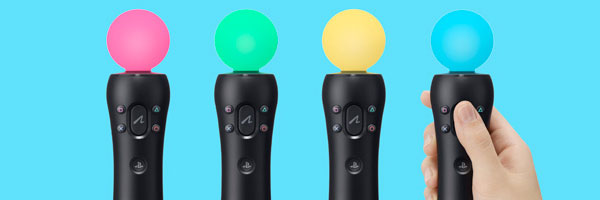Nikki Kuppens is Game Designer at W!Games. In his monthly column, he writes about the adventures of a game developer.

For the games industry, the second week of March was all about the Game Developers Conference. Although this biggest industry event in the world is always the stage for new stories and announcements, there was one message that dominated my Twitter feed and the usual gaming websites: the PlayStation Arc is now called PlayStation Move.
The future
Even after GDC, information and videos are hard to miss, with a comical note in the form of presentations from the future by Kevin Butler, so called vice president of everything at PlayStation. These promotional images are almost completely aimed at the player, at what this development ultimately means for the consumer. But I find it much more interesting to know what technology like Move and Microsoft’s Natal could mean to me as a designer. How can I use it in my games and as an inspiration for new ideas?
Hardcore
The Wii has mostly shown us that motion control can be used quite well for funny, small games, with a more serious implementation here and there. Now that two platform holders that usually attract a more hardcore audience heavily invest in this, I’m quite curious about the Socoms and Fables among the motion controlled games.
Not exactly those games, of course, but the prestigious projects that attract the already existing target audiences of Sony and Microsoft. Audiences that, in my opinion, have higher demands when it comes to functionality of hardware and its implementation, within games they would like to play. Not entirely coincidentally, both games I gave as an example are already in development. How Fable III will work with Natal exactly remains to be seen, but the fact that the controls of Socom 4 look very much like most Wii shooters slightly disappoints me.
Rule of thumb
I think the problem is that some developers, stimulated by publishers and platform holders for understandable reasons, try to force the technology into their game. Not as an alternative or improvement, but just because it seems to be the new standard.
I admit, whenever I see new footage or information on Move or Natal, I usually try to come up with ways of how our game Greed Corp could be played with it. The same goes for the game I’m currently working on. But I think that, as a designer, you shouldn’t wonder how your game is going to be played with this technology. So instead, I try to ask myself how the technology could be beneficial to my game. The rule of thumb should be that a game will be more fun and will play better with motion control. If not, you’re totally missing your goal as a designer and I would also just rather sit on a couch holding a controller myself.
24-year-old young lady please
Although I don’t see myself talking to a 12-year-old boy all day, I’m very much interested in really new experiences like Molyneux’s Milo. The idea itself is completely inspired by Natal, which by definition should make that the best way to play it. Just like some traditional games will not lend themselves well to motion control, not all products specifically designed for it will be more playable with a controller.
I’m looking forward to experimenting with Move and Natal, to see what capabilities are hiding behind the most logical applications. Hopefully this will lead to a couple of innovative concepts and product improvements. So there you are: eventually the success or failure of motion control in general lies with the designer, not with the manufacturer.





No comments have been left for this post.